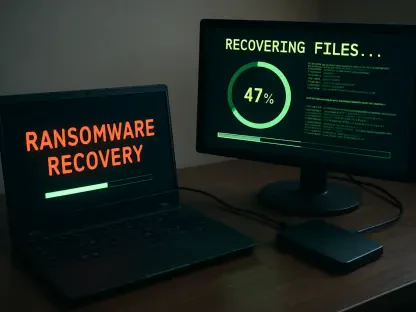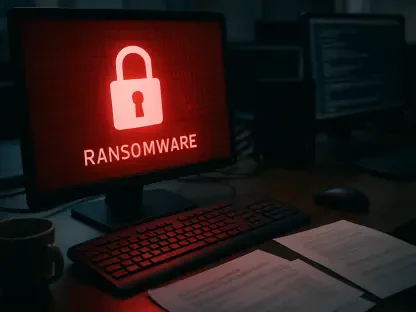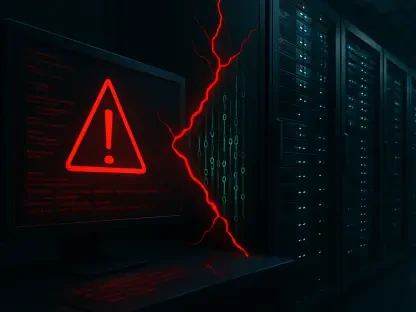Open Source Software (OSS) has become an integral part of modern digital infrastructure, powering nearly 90% of code bases and constituting 70-80% of the material in many applications. However, this widespread adoption has also introduced significant security challenges. As we look ahead to 2025, understanding and addressing these challenges is crucial for safeguarding the software supply chain.
The Rise of Open Source Software
Over the past decade, OSS has seen exponential growth, becoming a cornerstone of technological innovation. Its collaborative nature and cost-effectiveness have driven its adoption across industries. However, this ubiquity also means that vulnerabilities in OSS can have far-reaching consequences. The sheer number of OSS packages, exceeding 5 million, and the varied maintenance levels of these projects create a complex security landscape. Many commercial entities rely heavily on OSS libraries, which translates to diverse points of exposure. This extensive usage presents a highly attractive attack surface for malicious actors.
The collaborative approach that drives OSS development allows rapid iteration and widespread participation but also introduces challenges in terms of consistency and long-term maintenance. With vast numbers of contributors and varying levels of expertise, the patching of security vulnerabilities can be uneven and unpredictable. Consequently, organizations must remain vigilant and proactive in monitoring OSS components to mitigate potential risks. As OSS continues to be the backbone of digital transformation, creating robust and scalable security practices must be a top priority.
The Growing Threat of Supply Chain Attacks
Supply chain attacks have surged by 431% since 2021, with OSS vulnerabilities being a key conduit for these attacks. Attackers leverage the “one-to-many” advantage, where compromising a single OSS package can impact multiple organizations. This trend underscores the urgent need for improved security protocols within the software supply chain. The lack of coordinated governance and visibility into OSS code exacerbates the problem. Developers are not required to produce Software Bill of Materials (SBOMs), which further complicates the management of OSS packages. This deficiency in governance and visibility leaves significant gaps in OSS oversight and security.
As malicious actors become increasingly sophisticated, they often target smaller projects with weaker security practices, knowing that these components are widely used in larger systems. The integration of compromised OSS packages allows attackers to infiltrate numerous organizations simultaneously, amplifying the impact of their efforts. To counter this growing threat, the industry must prioritize transparency and accountability in the development and use of OSS.
Organizations can begin by establishing comprehensive security policies that mandate continuous monitoring of OSS dependencies and the adoption of SBOMs. Implementing automated tools to track and manage OSS components can further improve visibility and mitigate risks. These measures are essential for maintaining the integrity of software supply chains and safeguarding against the evolving threat landscape.
Regulatory and Industry Efforts
In response to the growing threats, federal agencies and some critical industries have mandated the use of SBOMs. Regulations like the Digital Operational Resilience Act (DORA) necessitate OSS testing, but private industries still lack stringent requirements. Despite these regulatory efforts, the practice of producing SBOMs is not yet prevalent, leading to persistent visibility gaps. The EO14028 Executive Order from 2021 promotes the utility of SBOMs, but widespread and consistent adoption remains an open issue. Improving standards and integrating SBOM generation tools within developer workflows show promise for the future. However, more systemic solutions and industry-wide adherence to best practices will be essential to protect the software supply chain.
To bolster the effectiveness of regulatory measures, policymakers and industry leaders must work collaboratively to create comprehensive guidelines and frameworks tailored to the diverse needs of different sectors. Developing standardized protocols for SBOM generation and distribution can help ensure that all organizations have access to the same level of transparency and security. Furthermore, incentivizing the adoption of best practices through grants, funding, and resources for OSS projects can significantly enhance the overall security posture of the software supply chain.
The Role of Artificial Intelligence in OSS Security
Artificial Intelligence (AI) stands out as a potential game-changer in OSS security. AI has the dual capacity to both augment and undermine security. Gen-AI tools may inadvertently generate insecure code, while AI Package Hallucination attacks represent novel threats wherein AI suggests non-existent but plausible malicious packages. AI tools can improve vulnerability detection and response, but they can also be manipulated to introduce risks. This dual role of AI highlights the need for careful integration and well-informed adoption. As AI continues to evolve, its impact on OSS security will be a critical area to watch.
The use of AI for enhancing OSS security brings a host of benefits, such as faster identification and remediation of vulnerabilities, automated code reviews, and predictive analytics to anticipate potential threats. However, these advantages must be weighed against the potential for AI-driven attacks that exploit the same capabilities to create sophisticated, hard-to-detect exploits. To harness the full potential of AI while mitigating associated risks, organizations must develop and enforce rigorous AI governance frameworks that emphasize transparency, accountability, and ethical considerations.
Collaboration between AI researchers, cybersecurity professionals, and OSS communities will be crucial in developing effective strategies to counteract AI-induced threats. By fostering an environment of shared knowledge and best practices, the industry can better anticipate and respond to emerging challenges, ensuring the continued security and resilience of OSS ecosystems.
Innovative Approaches: The tea Protocol
The tea protocol proposes a decentralized framework to enhance OSS sustainability and security by using blockchain technology and incentivizing developers with tokens. This innovative approach aims to address some of the inherent challenges in OSS security by promoting secure development practices. However, there are concerns regarding potential misuse of the tea protocol, creating new challenges for OSS registries. Ensuring the integrity and security of this decentralized framework will be crucial for its success. The tea protocol represents a promising step forward, but its implementation must be carefully managed to avoid unintended consequences.
The use of blockchain technology within the tea protocol aims to create a transparent and immutable record of transactions, ensuring that security updates and patches are verified and traceable. By incentivizing developers with tokens, the protocol encourages ongoing maintenance and timely responses to vulnerabilities, fostering a more secure OSS ecosystem. Nevertheless, the successful implementation of the tea protocol hinges on addressing potential issues such as token valuation, fraud, and regulatory compliance.
To mitigate these risks, stakeholders must establish robust governance structures and clear guidelines for participation. Continuous monitoring and auditing of the tea protocol will be essential to maintain its integrity and prevent malicious actors from exploiting the system. As the protocol matures, ongoing collaboration between developers, security experts, and regulatory bodies will be crucial to adapting and refining its framework, ensuring that it remains resilient in the face of evolving threats.
Proactive Measures and Predictions for 2025
Experts predict continued regulations and compliance efforts in 2025 aimed at improving supply chain security. However, there are concerns about reactive regulations potentially leading to a reduction in quality OSS options due to compliance costs and liabilities. Balancing innovation and security will be a key challenge for the cybersecurity community. Efforts to secure the software supply chain will continue to be paramount, with regulations, industry practices, and innovative solutions contributing to a more secure digital landscape.
The cybersecurity community must anticipate new threats, adapt regulatory measures, and promote collaborative efforts between open-source communities and commercial enterprises. As the landscape evolves, proactive measures such as regular security audits, vulnerability assessments, and the integration of advanced security tools will be critical in maintaining a robust defense. Additionally, fostering a culture of shared responsibility and collaboration can help drive the development of best practices and innovative solutions that address emerging challenges.
By staying ahead of potential threats and continuously refining security strategies, the industry can ensure that the benefits of OSS are realized without compromising the integrity of the software supply chain. This approach will be instrumental in fostering a resilient and secure digital ecosystem that can withstand the complexities and uncertainties of the future.
Conclusion
Open Source Software (OSS) has evolved into a fundamental component of contemporary digital frameworks, with nearly 90% of code bases incorporating OSS. It constitutes around 70-80% of the substance in many applications, underscoring its pervasive role in technological development.
Despite its advantages, the extensive use of OSS brings with it significant security concerns. These challenges become even more pressing as the digital landscape continues to evolve. By 2025, it will be essential to thoroughly understand and address these security issues to protect the global software supply chain. Without proper safeguards, the very architecture that supports countless digital services and applications could be compromised, leading to widespread vulnerabilities.
The increasing reliance on OSS makes it imperative to adopt stringent security protocols and practices. Organizations must regularly update their OSS components, conduct rigorous security audits, and stay informed about potential vulnerabilities. Collaborative efforts across the industry will be critical in developing robust strategies to mitigate risks associated with OSS. Enhancing oversight and implementing comprehensive monitoring systems will help ensure the integrity and security of the software supply chain, ultimately safeguarding users and maintaining trust in digital infrastructure.
As we progress towards 2025, the focus on strengthening OSS security measures will be crucial. The future of digital innovation and the safety of technological ecosystems depend on proactive and informed actions taken today.









